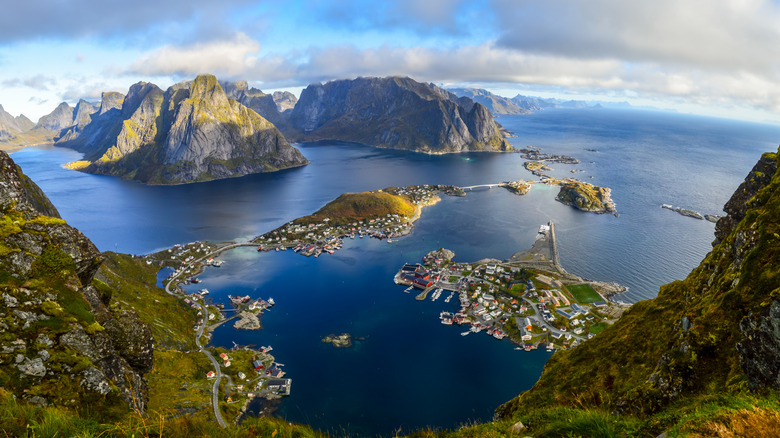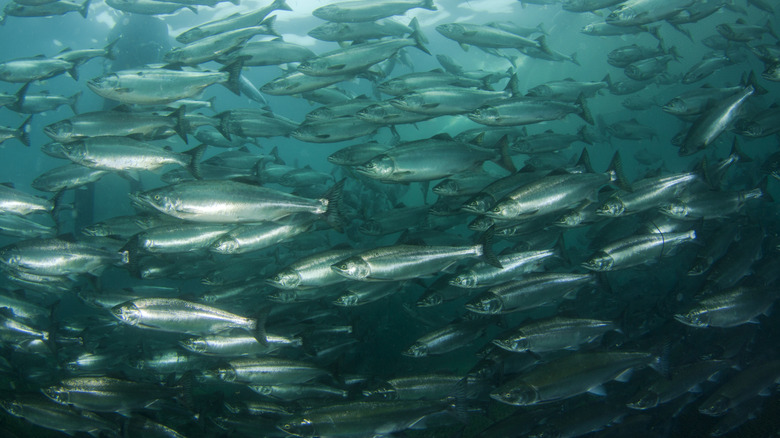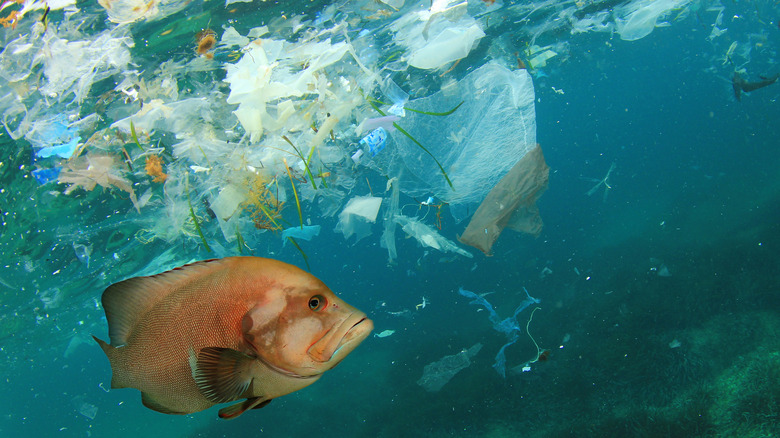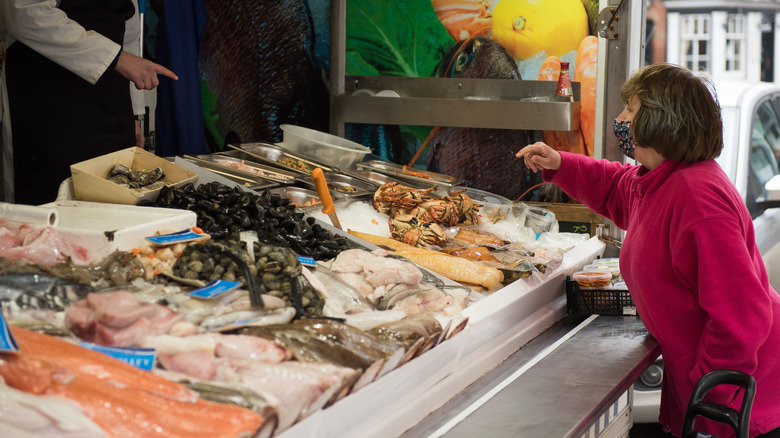What Makes Norwegian Seafood Unique
Norway is known for more than 1,000 picturesque glacial fjords (Visit Norway) and 63,000 miles of rugged coastline — more than any other country except Canada (Hurtigruten). Dotted with fishing cottages, the vast Norwegian coast edges against icy cold waters of its seas.
Sparsely populated, Norway is located at the northernmost reaches of civilization. The city of Arendal at the southern tip marks 56.3 degrees north, and North Cape tops out at 71 degrees north, per Maps of the World. The town of Rossøya, on the Norwegian island of Svalbard, sits at 80.5 degrees latitude, according to Life in Norway, making Norway a little over 600 miles from the North Pole.
The Arctic circle bisects the country at 66.3 degrees north, according to Britannica. The country is flanked by Sweden to the east, Russia and Finland to the northeast, and the Skagerrak Strait to the south/southeast, with Denmark just on the other side. The Norwegian Sea aligns Norway's western border with the Atlantic Ocean further beyond. To the north, the Barent Sea reaches the top of the world.
The country's maritime climate moderates the coast's temperatures, making Norway surprisingly warm for its latitude (Visit Norway) but make no mistake, winters are harsh, and the seas are frigid. Sea-faring from the beginning, for Norwegians and their Viking ancestors, fishing has long been a Norwegian trade and industry (BBC).
Sustainable aquaculture
Aquaculture is not just a signature of Norwegian life; it is big business. Statista reports in 2021, Norway exported more than 110.7 billion Norwegian kroner (about $11 billion) worth of seafood, with the vast majority being salmon. Norway is the second largest exporter of seafood and fish, just behind China (World Atlas).
Norwegians are a world leader in sustainable aquaculture (Norwegian Seafood Council), promoting healthy habitats and healthy fish. Exporting 2.7 million tons of seafood annually comes with a responsibility of environmental concern. By law, Norway forbids throwing dead or ill fish and their post-processing remains into the sea. The country's coast guard keeps a watchful eye on ensuring that fishermen follow the laws concerning where and when fishing is permitted. These regulations prevent overfishing, particularly of young sea creatures.
In addition, Norwegians regulate the industry from the source to the sale, according to Norway Exports. Whether it results in canned seafood, flash frozen, or fresh fish packed in ice before export, the aim is clean and transparent practices across the entire supply chain.
Pristine, icy cold waters
Norway has taken steps to reduce ocean pollution, including plastics and microfibers, which become embedded in the digestive tracts of sea creatures and are consumed by humans. Single-use plastics and microfiber clothing are the prominent polluters. The country is taking active measures to reduce the cause of pollution and to clean up contaminants in their seas and fjords. Axios reports that the country committed $200 million in 2018 to fight and reduce ocean plastics. In a strong show of leadership, the country is fostering a clean ocean initiative across the globe (Mashable).
What does this mean for you? By leading the charge for sustainability in the fishing industry, Norway is establishing itself as a leader in healthy and abundant seafood.
When it comes to Norwegian cod, famed Norwegian chef, Gunnar Jensen, exclaims, "The cold and clear waters contribute to high quality." per, Visit Norway, who goes on to say, "Their long journey from the Barents Sea also means that the fish has more muscular and firmer flesh than regular cod."
Norway has diverse seafood populations and abundant supplies
The Gulf Stream, a warm oceanic current that travels north from the Gulf of Mexico and across the Arctic Circle to Europe, floods into the arctic waters along the Norwegian coastline, depositing nutrients and migrant fish into an already densely populated aquatic environment, per From Norway. The juxtaposed temperate and glacial waters surrounding Norway boast abundant populations of seafood, including sea urchin, lobster, crab, mussels, oysters, clams, haddock, arctic cod, pollack, redfish, halibut, mackerel, and more (Visit Norway). Inland lakes and rivers are teaming with freshwater trout and other species. Norway's greatest aquatic exports by value are wild and farm-raised salmon, cod (salt-dried, canned, fresh, and frozen), mackerel, herring, and prawns, per Statista.
Norway's focus on fishing industry best practices — from monitoring every step of the fishing process tactics to championing pristine waters and sustainability — allow for seas with healthy and diverse populations. Overall, sustainability, ocean health, and diverse selection make Norwegian seafood unique.



